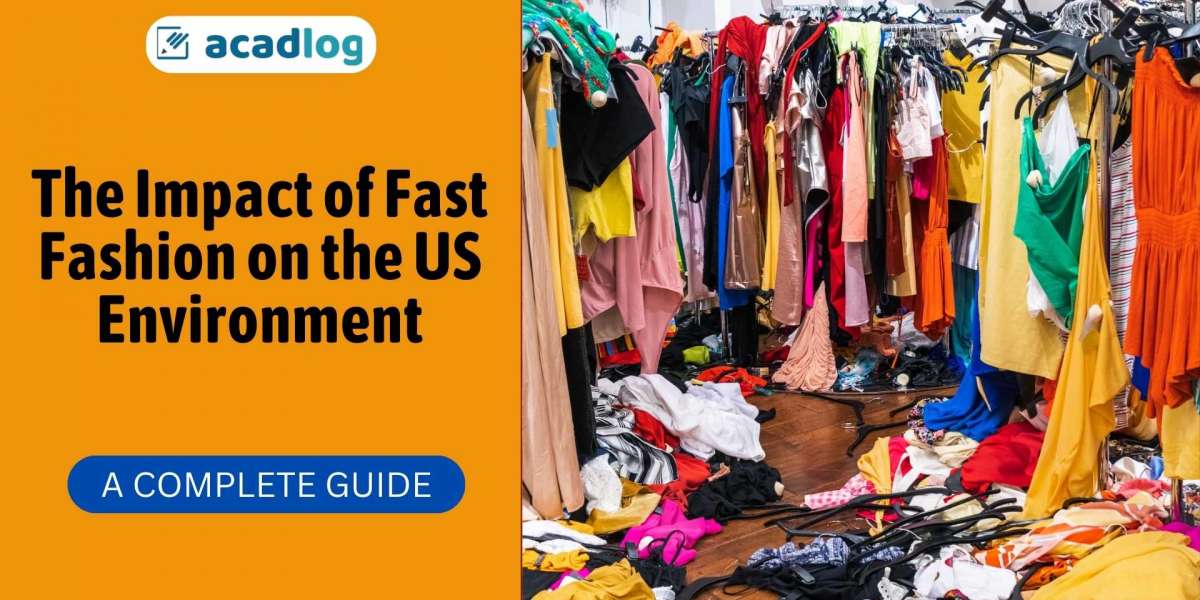Fast fashion, characterized by rapid production cycles, low-cost garments, and disposable trends, has become a dominant force in the fashion industry. While offering consumers affordable and trendy clothing, fast fashion comes with significant environmental consequences. Here's a look at the impact of fast fashion on the environment in the United States:
1. Excessive Resource Consumption
Fast fashion relies on the rapid production of cheap garments made from resource-intensive materials such as cotton, polyester, and synthetic fibers. The production process requires vast amounts of water, energy, and chemicals, contributing to environmental degradation, water pollution, and carbon emissions.
2. Pollution and Chemical Contamination
The manufacturing processes involved in fast fashion, including dyeing, bleaching, and finishing, release hazardous chemicals and pollutants into the environment. Wastewater contaminated with toxic substances such as heavy metals, dyes, and synthetic chemicals contaminates waterways, soil, and ecosystems, posing risks to human health and biodiversity.
3. Textile Waste and Landfill Overflow
Fast fashion encourages a culture of disposability, where clothing is treated as short-term fashion trends rather than long-lasting garments. As a result, vast amounts of textile waste are generated, with a significant portion ending up in landfills. Synthetic fibers, in particular, contribute to the proliferation of microplastics in the environment, further exacerbating pollution and environmental degradation.
4. Carbon Emissions and Climate Change
The production, transportation, and disposal of fast fashion garments contribute to carbon emissions and climate change. From the extraction of raw materials to the manufacturing process and distribution networks, each stage of the fast fashion supply chain emits greenhouse gases, exacerbating the impacts of global warming and climate instability.
5. Exploitation of Workers
Fast fashion's relentless pursuit of low costs and high profits often comes at the expense of workers' rights and well-being. Garment workers, particularly in developing countries where fast fashion production is concentrated, face exploitative working conditions, low wages, long hours, and inadequate safety standards. The race to produce cheap clothing at the fastest pace possible perpetuates a cycle of exploitation and human rights abuses in the fashion industry.
6. Loss of Biodiversity and Habitat Destruction
The cultivation of cotton, one of the primary materials used in fast fashion, often involves the extensive use of pesticides and water-intensive irrigation practices. These agricultural practices contribute to habitat destruction, soil degradation, and loss of biodiversity, impacting ecosystems and wildlife populations in cotton-producing regions.
7. Social and Cultural Impacts
Fast fashion's emphasis on rapid consumption and disposable fashion trends perpetuates a culture of overconsumption and materialism, which can have detrimental social and cultural impacts. It promotes a throwaway mentality, where clothing is discarded after minimal use, leading to feelings of dissatisfaction, insecurity, and social comparison among consumers.
Conclusion
The environmental impact of fast fashion on the United States is profound and far-reaching, encompassing resource depletion, pollution, waste generation, climate change, and social injustices. Addressing these issues requires collective action from consumers, fashion brands, policymakers, and industry stakeholders. By embracing sustainable fashion practices such as ethical production, responsible consumption, circular economy initiatives, and support for fair labor standards, we can mitigate the environmental and social impacts of fast fashion and move towards a more sustainable and equitable fashion industry.
Visit How, what and why, NBA queries and Trending times now for more articles like these:



